Military
The Marine Corps' AH-1Z Viper Is One of the Fastest Attack Helicopters in the World
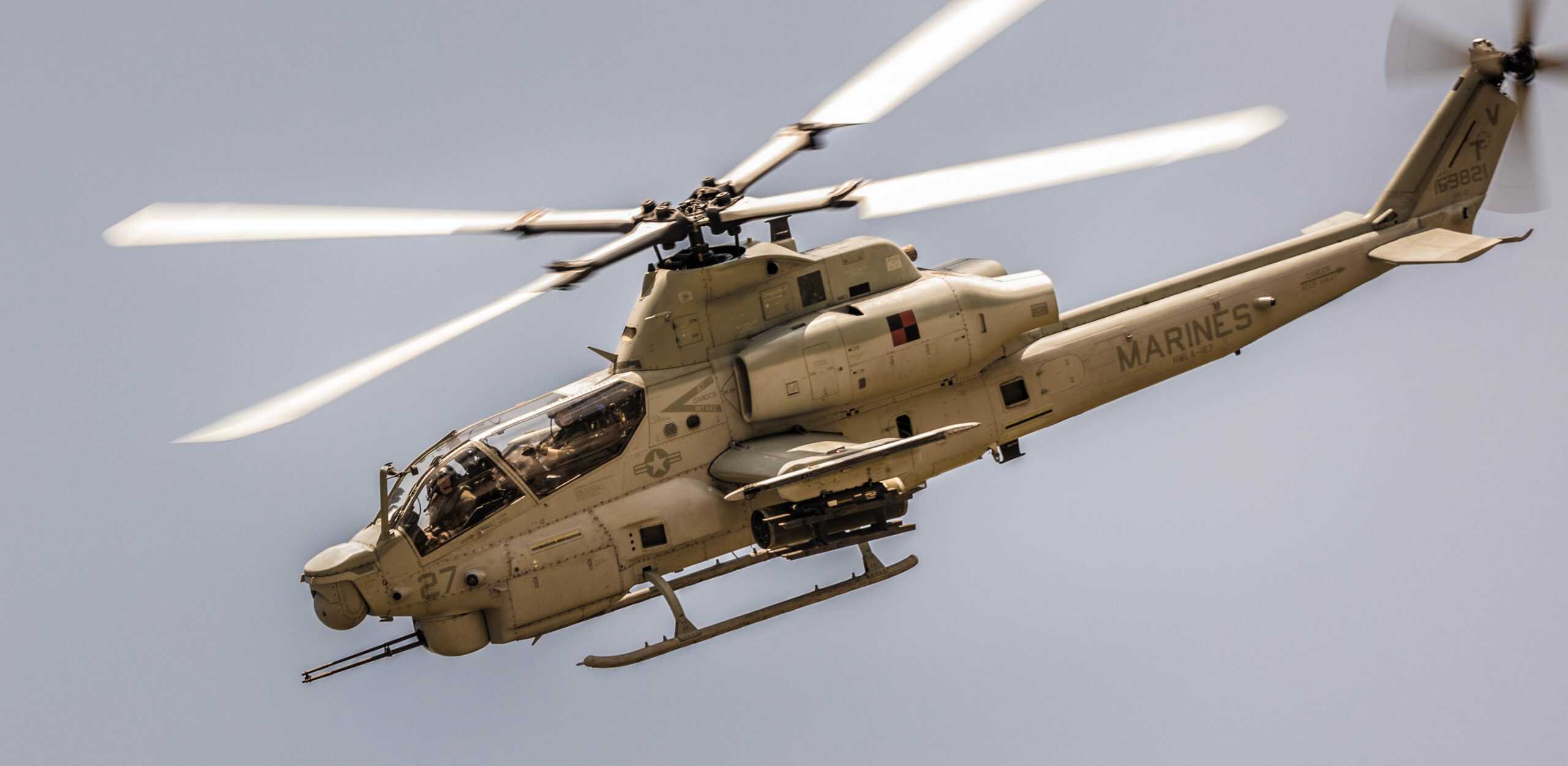
Published:

24/7 Wall St. Insights:
With a top speed of 255 mph, the AH-1Z Viper ranks among the fastest attack helicopters in the world, and the U.S. Marine Corps has over 175 of these at its disposal. Its original design is rooted in the iconic AH-1 Cobra, which is one of the first dedicated attack helicopters that rose to prominence during the Vietnam War. (The helicopter war: a look at the helicopters that defined the Vietnam War.)
Over the decades, the Cobra series has evolved with modern combat demands, and the AH-1Z Viper is the most recent iteration. These helicopters earned the nickname “Zulu” due to the “Z” in its call sign.
Manufactured by Bell, the Viper stands as a significant improvement from its predecessors, like the AH-1W Super Cobra. Notably, one of the biggest upgrades is its twin-engine design, powered by General Electric T700-GE-401C turboshaft engines, which allow the Viper to hit much higher speeds than most helicopters. Comparatively, the AH-64 Apache, used by the U.S. Army, maxes its top speed around 180 mph.
Speed isn’t the only thing that the Viper is packing. This helicopter can equip a wide array of weapons including Hellfire missiles, Sidewinder missiles, Hydra 70 rocket pods, and a nose-mounted 20mm cannon.
The Viper has been deployed in a few combat theaters, including Afghanistan and Iraq, where its speed and firepower have been instrumental in providing close air support to ground troops. These helicopters have also been incredibly useful in anti-armor strikes as well as reconnaissance missions.
The Viper is just one of the helicopters in service of the Marine Corps, and 24/7 Wall St. is taking a closer look at the whole lot. (This is every aircraft flown by the U.S. Marine Corps.)
To identify the fastest helicopters currently in service of the U.S. Marine Corps, 24/7 Wall St. reviewed data from the 2024 World Air Forces report from FlightGlobal, an aviation and aerospace industry website, and ranked the aircraft by top speed. Additionally, we’ve included supplemental information on the type of aircraft, year introduced, and armament.

Understanding the aircraft used by the U.S. Marine Corps provides insight into joint military capabilities and expeditionary defense strategies. Knowing what the Marine Corps has in its arsenal sheds light on its unique ability to project power quickly and operate in different environments. This also gives context to the tactical flexibility and logistical reach the Corps brings to its operations, from amphibious assaults to close air support. Lastly, the composition and technological sophistication of the Marine Corps’ aircraft fleet highlight its ability to maintain dominance and execute rapid response missions.
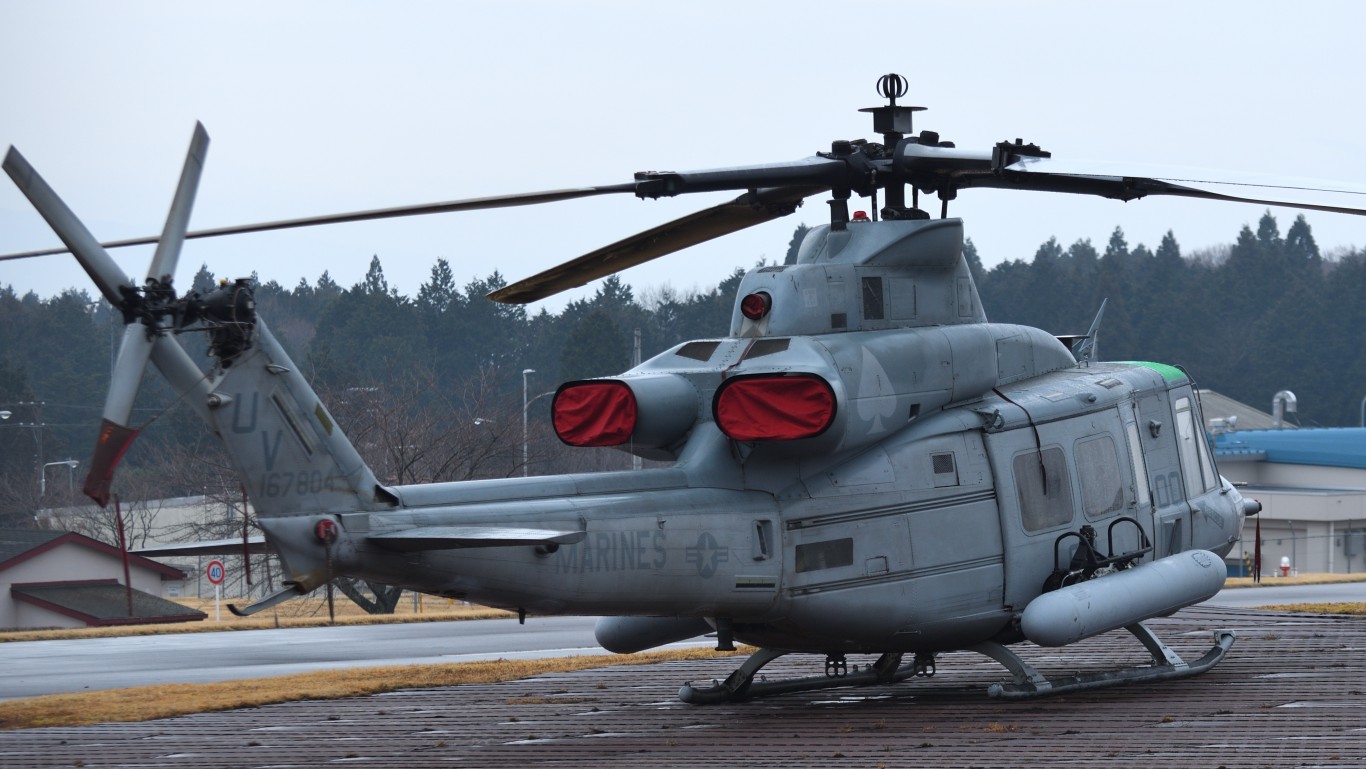
The UH-1Y Venom, affectionately known as the “Yankee”, is a key asset of the U.S. Marine Corps. Manufactured by Bell, the Venom is an upgraded version of the iconic UH-1 Huey that played an important role in the Vietnam War. The Venom can perform a wide range of missions, including troop transport, close air support, medical evacuation, and reconnaissance. It can carry a variety of weapons, including machine guns to rocket pods.
What sets the UH-1Y apart from its predecessor is its advanced avionics and sensor systems. Also its improved twin engine setup (General Electric T700) allows for much greater speeds.
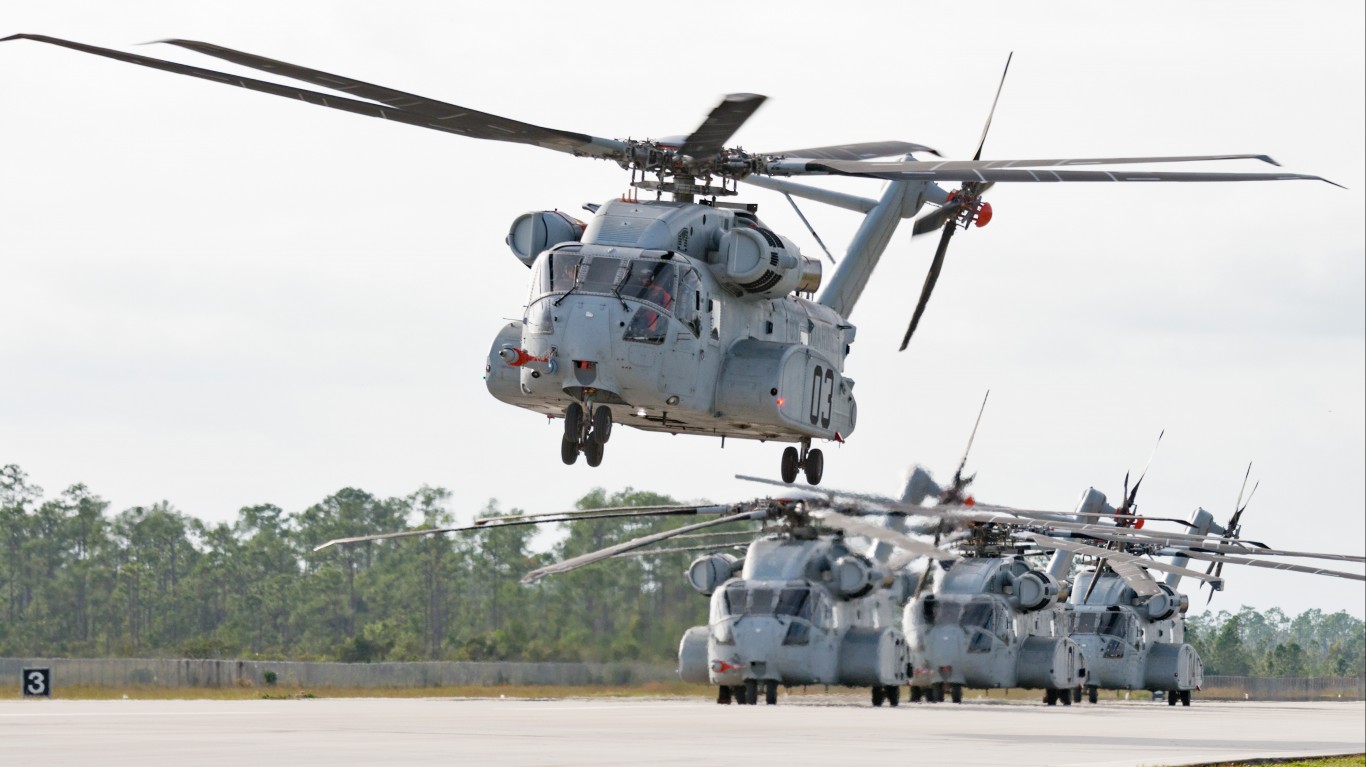
The CH-53K King Stallion is the newest heavy-lift helicopter to enter the U.S. Marine Corps’ arsenal. It is truly a game changer in military aviation. Built by Sikorsky, the King Stallion is capable of lifting over 36,000 pounds, which is roughly three times more than its predecessor, the CH-53E Super Stallion.
Also, the CH-53K has undergone serious upgrades further improving on the Super Stallion design from the 1980s. This newer variant incorporates fly-by-wire controls which allow for better precision in piloting as well as improved fuel efficiency and range. The King Stallion also features larger cargo space and upgraded avionics and sensors.
The King Stallion can hit a top speed of nearly 200 mph, and can be equipped with 12.7mm general purpose heavy machine guns and 12.7mm GAU-21 miniguns.
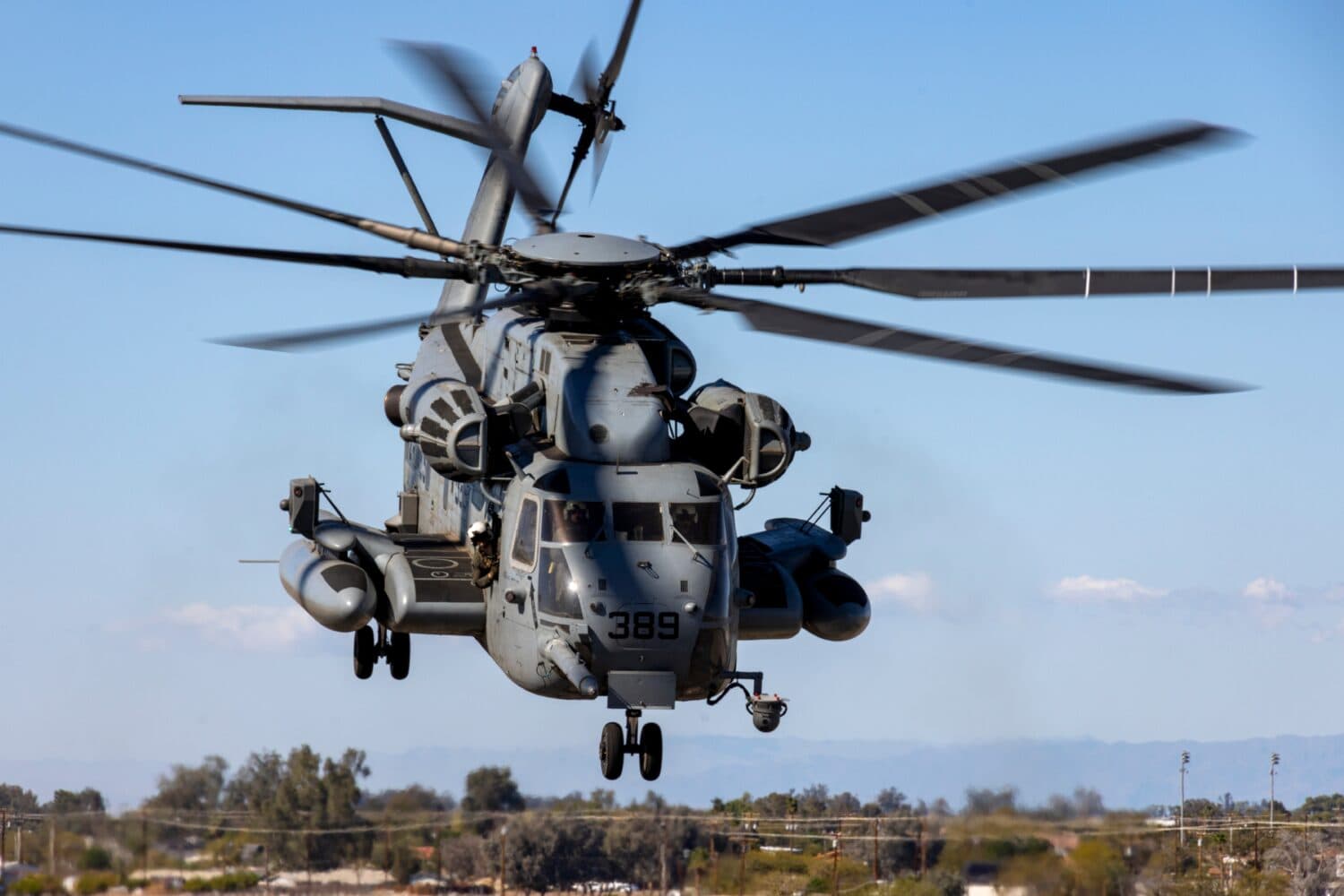
The CH-53E Super Stallion has been the workhorse of the Marine Corps since the early 1980s. It’s designed to transport large payloads and can lift roughly 12,000 pounds externally. The CH-53K is the upgraded version of this helicopter that debuted nearly four decades later.
One of the Super Stallion’s key features is its aerial refueling capability, which allows it to extend its operational range for longer missions. This feature, along with its ability to operate from amphibious assault ships, gives the CH-53E the reach to perform missions at land and sea.
The Super Stallion has an impressive combat record as well, serving in operations like Desert Storm, Afghanistan and Iraq.
The CH-53E is powered by three General Electric T64-GE-416/416A turboshaft engines, each producing around 4,380 horsepower. These allow for the CH-53E to hit speeds of nearly 200 mph.
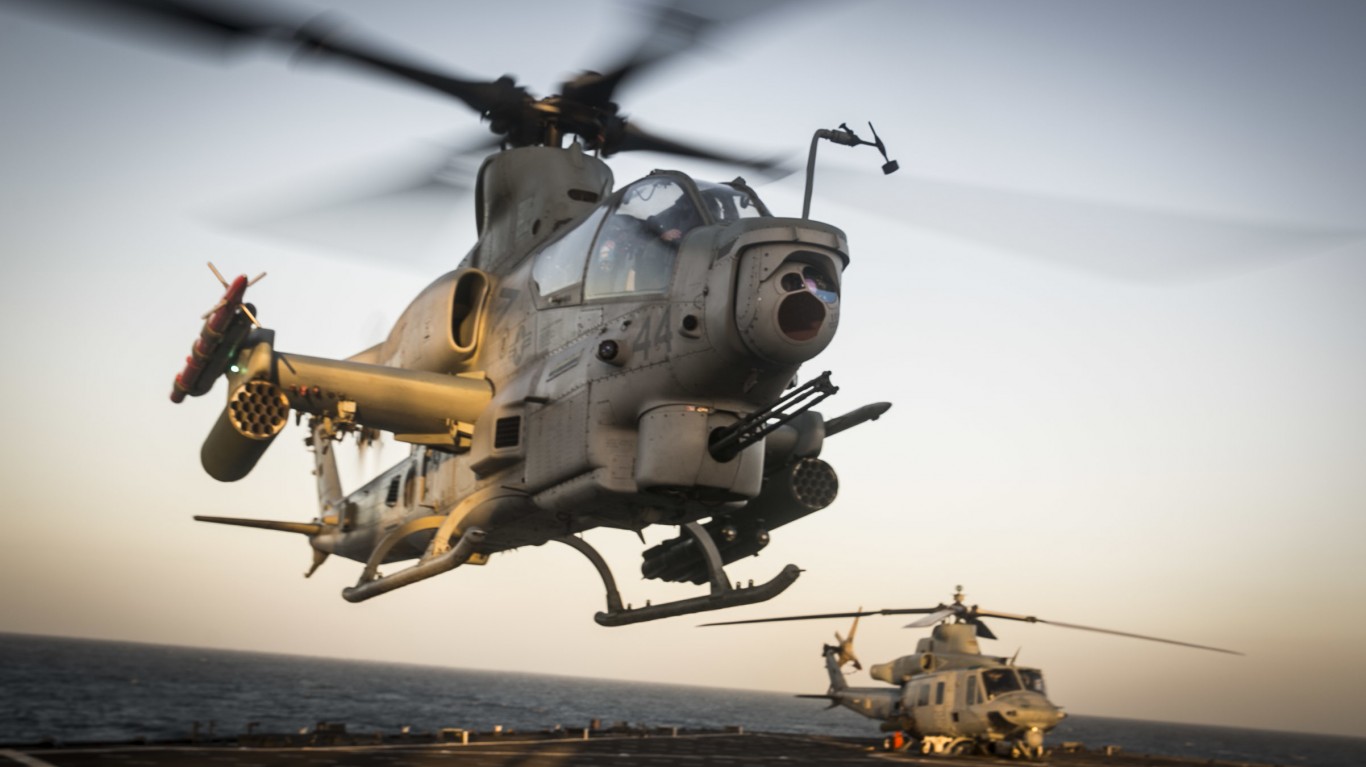
Known affectionately as “Zulu”, the AH-1Z Viper is a twin-engine attack helicopter and key asset of the U.S. Marine Corps. Developed by Bell, the Viper is the next evolution of the Cobra series, and these come with greatly improved agility and firepower.
The Viper is one of the most heavily armed aircraft at the disposal of the Marine Corps. These helicopters see a wide range of missions, including close air support, anti-armor strikes, and reconnaissance. As such, they are outfitted with Hellfire missiles, Sidewinder missiles, Hydra 70 rocket pods, and come standard with a nose-mounted 20mm cannon.
Powered by two General Electric T700-GE-401C turboshaft engines, the Viper can reach a top speed of 255 mph, making it one of the fastest and most maneuverable attack helicopters in service.
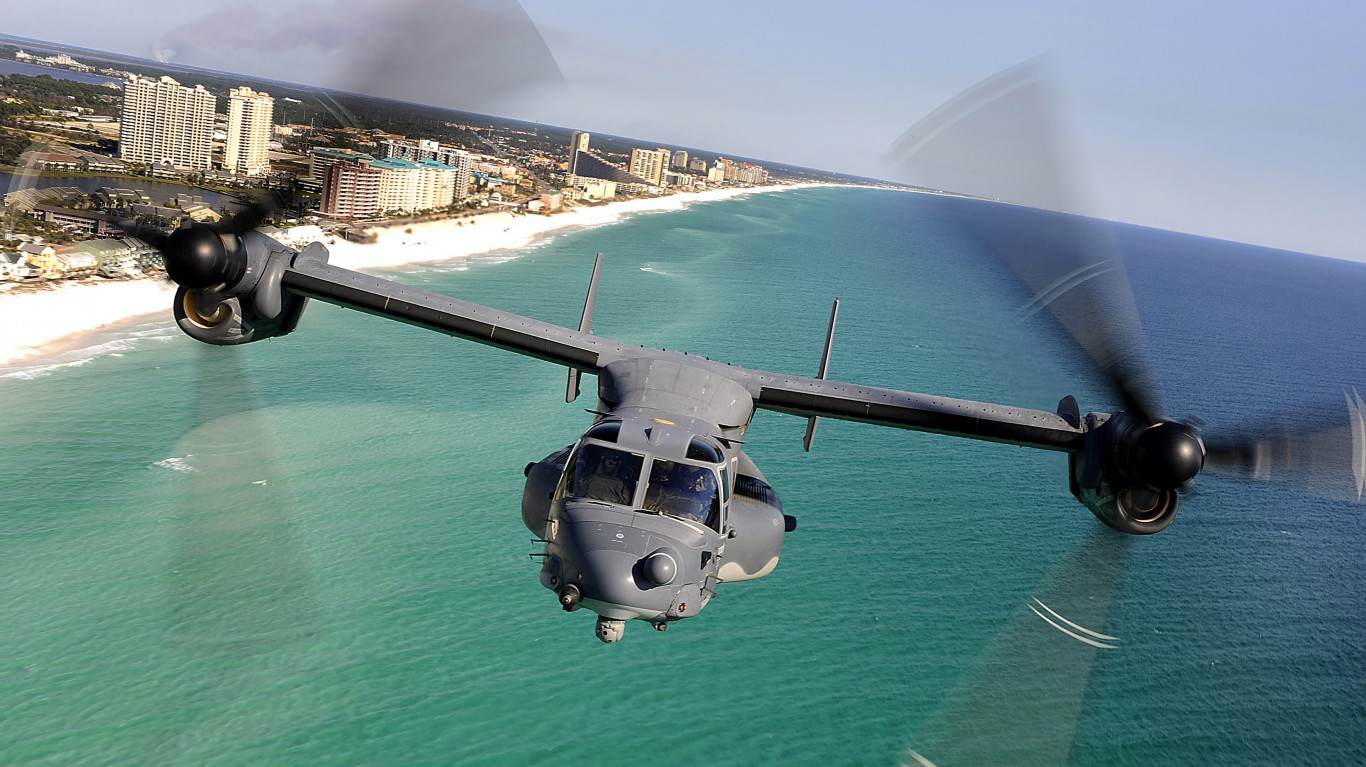
Known for its unique ability to take off and land vertically like a helicopter and then adjust its rotors to operate like a turboprop plane, the MV-22 Osprey is one of the more unique aircraft in the U.S. Air Force. It is manufactured by Bell Boeing and plays key roles in U.S. special operations missions like infiltration, extraction, and resupply. The U.S. Navy uses this aircraft extensively for troop deployment and extraction, or even just for logistical purposes. The Osprey also can refuel mid-flight which significantly extends its range for longer missions.
Since its introduction, the MV-22 Osprey has seen action in major operations, including Iraq, Afghanistan, and humanitarian missions worldwide, typically filling a logistical role. In terms of its cargo, the Osprey is capable of carrying up to 24 combat-loaded Marines or 20,000 pounds of internal or external cargo.
Retirement planning doesn’t have to feel overwhelming. The key is finding expert guidance—and SmartAsset’s made it easier than ever for you to connect with a vetted financial advisor.
Here’s how it works:
Why wait? Start building the retirement you’ve always dreamed of. Click here to get started today!
Thank you for reading! Have some feedback for us?
Contact the 24/7 Wall St. editorial team.